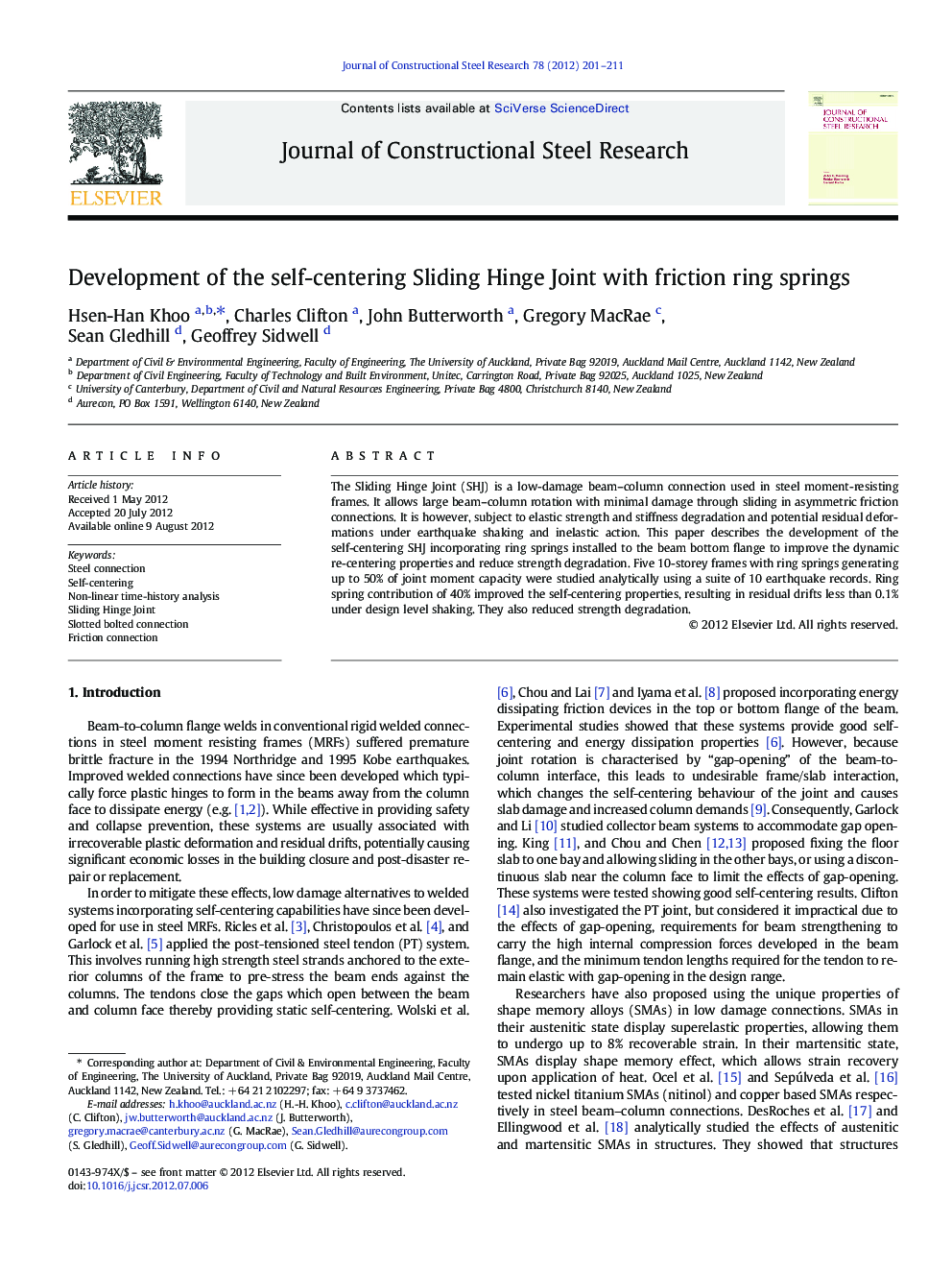| Article ID | Journal | Published Year | Pages | File Type |
|---|---|---|---|---|
| 285101 | Journal of Constructional Steel Research | 2012 | 11 Pages |
The Sliding Hinge Joint (SHJ) is a low-damage beam–column connection used in steel moment-resisting frames. It allows large beam–column rotation with minimal damage through sliding in asymmetric friction connections. It is however, subject to elastic strength and stiffness degradation and potential residual deformations under earthquake shaking and inelastic action. This paper describes the development of the self-centering SHJ incorporating ring springs installed to the beam bottom flange to improve the dynamic re-centering properties and reduce strength degradation. Five 10-storey frames with ring springs generating up to 50% of joint moment capacity were studied analytically using a suite of 10 earthquake records. Ring spring contribution of 40% improved the self-centering properties, resulting in residual drifts less than 0.1% under design level shaking. They also reduced strength degradation.
► Self-centering Sliding Hinge Joint with recentering ability provided by ring spring. ► Joints designed as a percentage of moment capacity generated by the ring spring (RS). ► Five frames with different RS contributions studied analytically. ► Residual drifts decreased with increasing RS contribution. ► Residual drifts under design level events within construction tolerance with 25% RS
